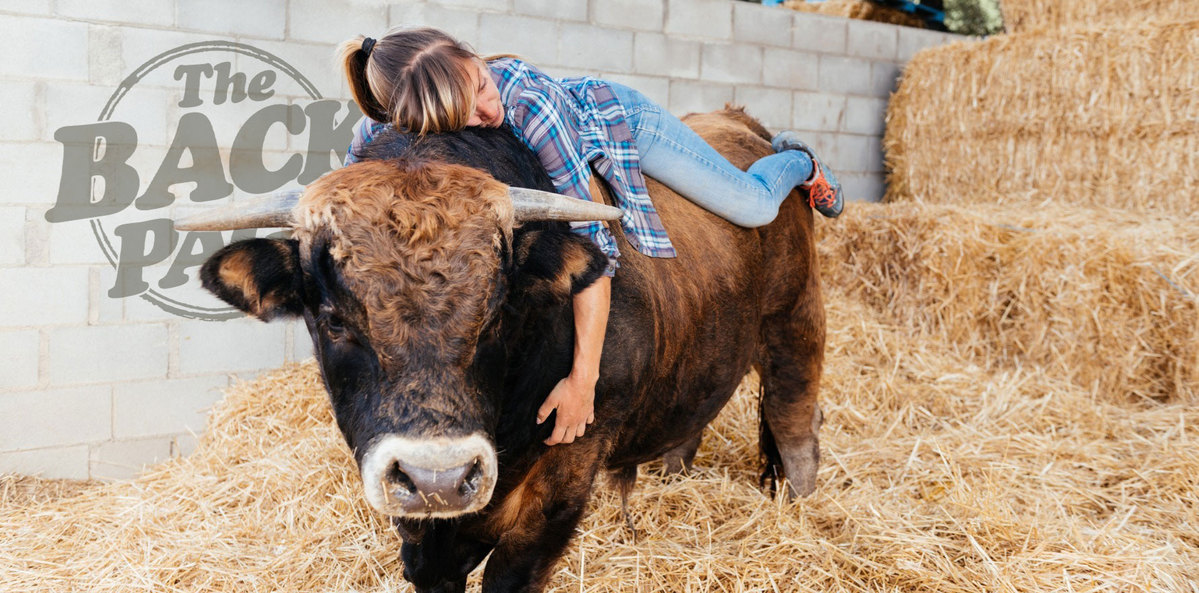Cattle seem to benefit from interactions just as much as humans, but they like the ladies better.
Bovine-assisted therapy has come highly recommended from a recent US study.
This may come as no surprise to the Dutch, who have apparently long known the psychological and physiological benefits of interacting with cattle. In the Netherlands, it’s normal to travel to the countryside just for the decompression and recalibration of “koeknufflen”, which directly translates to “cow cuddling”.
Well, that’s exactly what the study did. They sent 11 people aged 13-79, equipped with tasty treats and grooming brushes, into the pen of two steers at the Surrey Hills Sanctuary in New York.
The five male and six female humans spent a minimum of 45 minutes in the pen (the typical length of time for a clinical animal-assisted psychotherapy session), where the animals were not forced to interact and had free rein to return to their barn.
The humans just hung out petting, talking to, watching and taking pictures of their bovine companions. The steers accepted food from the humans and would lick or sniff them, but also occasionally snub them. It sounds like a pretty standard human-animal interaction, and not even unusual for some human-human interactions too.
Immediately following this, the human participants filled out a Human-Animal Interaction Scale, which identified positive and negative interactions and how they believed the animals felt about their interaction based on their behaviours.
It’s not surprising that they all felt a bit better after spending the better part of an hour frolicking in the sun with steers Magnus and Callum – rescued youths who share their pen at the sanctuary with two potbellied pigs and several chickens.
Honestly, it sounds like a better living situation than most of my previous share houses.
What WAS surprising was the “strong preference” shown by the steers towards the female participants compared to the men. It was reported that Magnus and Callum sought out the attention of the women, who in turn reported feeling stronger attachment to the steers.
Sorry, men, I guess our milkshakes bring all the steers to the yard.
The steers have been at the sanctuary their whole lives, but Magnus arrived with pneumonia and required a lot of care, resulting in a high level of attachment to his humans. Callum is described as being somewhat more reserved when it comes to interacting with humans. Both fellas come when they’re called, which is a truly heartwarming thing for a city-dweller like myself to hear.
One of the researchers lives at the sanctuary and was present for the interaction, so it’s possible that Magnus and Callum were being especially cuddly around the hand that feeds them. My dog certainly knows to suck up to me shortly before dinnertime.
One participant reported, “it wasn’t a big deal to me that [Callum] was shy. But when he finally started to approach me, it felt so good! Like I was special.”
Bless their little cotton socks.
The authors stated that cows have special behavioural traits that are unique for their size and temperament, and which allow for human bonding.
“Despite equine-assisted therapy’s long history as a successful treatment model for a variety of conditions, there are few other species of farm animals (pigs, llamas) that are allowed to work as certified therapy animals,” they wrote.
“We have discovered in the current study that bovine-assisted therapy may not only be an effective treatment model that benefits human participants but appears to be enriching to the cattle participants, as well, as shown by their proximity to and continuous interactions with humans.”
Well, I for one say it’s time to put an end to the discrimination that farm animals have experienced as wannabe therapy pets and start normalising koeknufflen.
Dogs, cats and bunnies are old news. Bring on the cattle!
Send all the moos that’s fit to print to penny@medicalrepublic.com.au.


